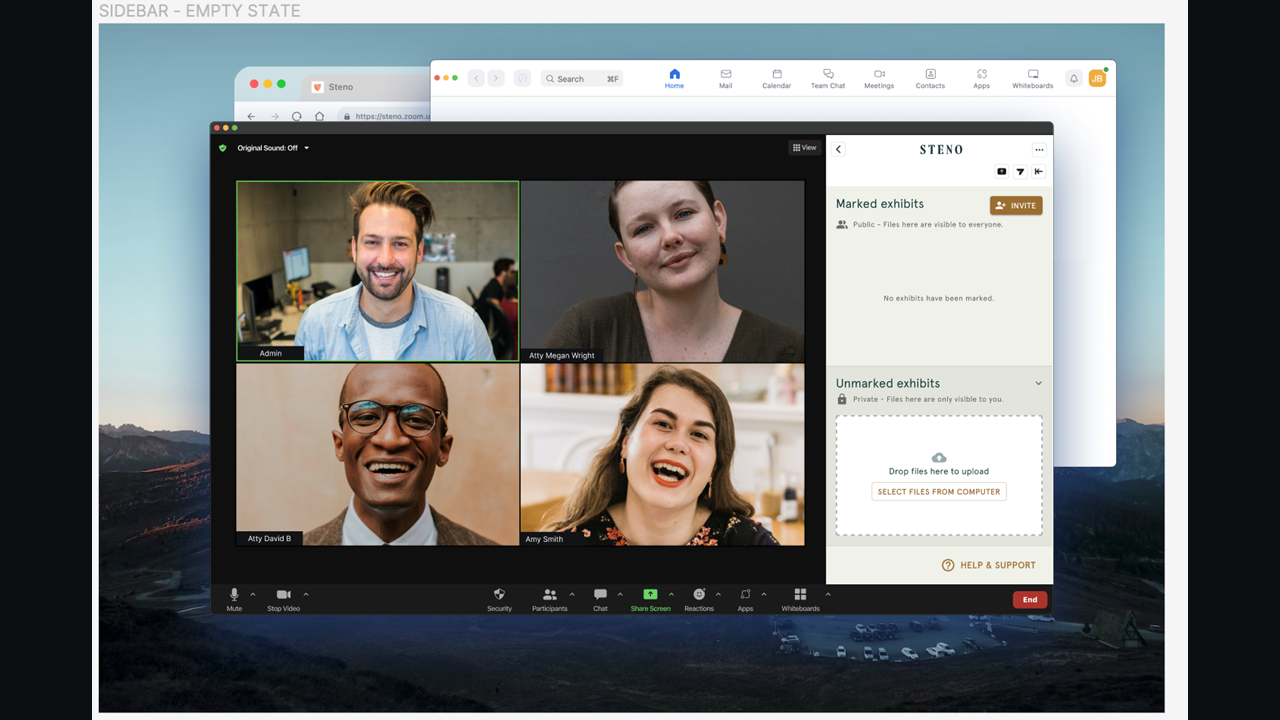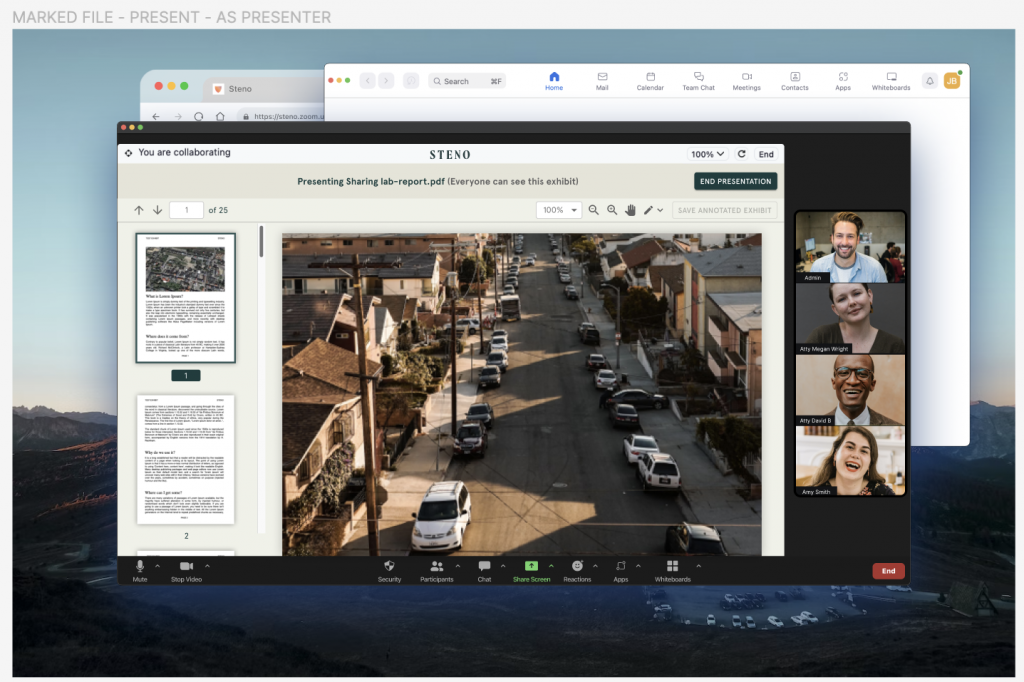Ever since its founding in 2018, Steno has been on a mission to disrupt depositions. It started as a court reporting agency that also offered non-recourse financing of deposition costs, and then in 2020 launched Steno Connect, its own web-based video conferencing technology specifically built for remote depositions and exhibit handling.
In the early days of the pandemic when the company developed Steno Connect, it did so to provide lawyers with an alternative to Zoom for depositions. At the time, many legal professionals were concerned about the security of Zoom meetings and many others were unable to install the Zoom client.
But in the years since, as Zoom has enhanced its security and functionality, and as it has become ubiquitous among lawyers and legal professionals, Steno’s customers began asking for Steno Connect to add more of the kinds of features they regularly used in Zoom, such as breakout rooms, chats, and virtual backgrounds.
Read more about Steno Connect in the LawNext Legal Technology Directory.
“We were forcing our customers to choose between the experience of Zoom and the functionality of Steno Connect,” said Dylan Ruga, Steno’s president and cofounder and a Los Angeles-based litigator.
Rather than continue down that path, Steno decided to take the functionality of its web platform and rebuild it as a Zoom app, so its customers could get the best of both worlds. The app is now available in the Zoom app store and, in launching it, Steno becomes the only court reporting agency with a Zoom integration, according to Ruga.
Easy Exhibit Handling
For depositions, the key functionality that Steno Connect brings to Zoom is exhibit handling. With the app installed, lawyers get drag-and-drop functionality to upload, preview, number, share and annotate exhibits during a deposition, and then save them all back to Steno’s Firm Dashboard.
The app appears as a panel to the right of the Zoom screen. (See image above.) Within it, the lawyer can upload exhibits to be marked, either by dragging them to the app or by selecting specific files. Once the exhibits are uploaded, the lawyer can preview the unmarked exhibits, without anyone else able to see them.
When the lawyer wants to mark an exhibit, the lawyer simply selects “Introduce.” The app assigns an exhibit number (which the lawyer can edit) and asks the lawyer to confirm that that the exhibit should be introduced.
The numbered exhibit then appears in the marked exhibits window at the top of the app. There, lawyers can still preview exhibits or, when ready, present them, which opens the exhibit and shares it with everyone.
The app also allows exhibits to be annotated in Zoom and saved with the annotations.
On the back end, all the marked exhibits are downloaded to Steno’s system so that they are available when the deposition is over.
You can install the app directly from the Zoom apps store, but in order to use it, you have to be in a Zoom meeting initiated through Steno. Participants in the deposition get an invite to a Steno Connect web page, from which they can open the Zoom session. (Zoom enterprise accounts may require permission from an administrator.)
Even if a user does not have the Steno Connect app installed, the user can still upload and access shared exhibits from the initial Steno sign-in page.
Once you have the Steno Connect app installed, you can invite other meeting participants to install it.
Disrupting Depositions
In May, Steno raised $15 million in a series B round, with the goal of continuing in its mission to revolutionize depositions and litigation support services.
Ruga, a former Steptoe & Johnson partner who founded his own plaintiffs’ litigation firm in 2016, first conceived of the company as a vehicle for financing deposition costs.
He took the idea to Greg Hong, an entrepreneur who had previously founded Reserve, a restaurant reservation system, and sold it in 2018 to another restaurant reservation company, Resy, which was later acquired by American Express. Together with CTO Dan Anderson, they launched Steno in 2018 as a court reporting agency paired with the non-recourse payment option, DelayPay.
After the pandemic shut down live depositions, the company developed Steno Connect, a remote video deposition platform, and then Digital Firm Dashboard, on which a firm can manage all its litigation support services.
Related: With $3.5M Raise, Steno Aims To Disrupt Depositions.
 Robert Ambrogi Blog
Robert Ambrogi Blog
